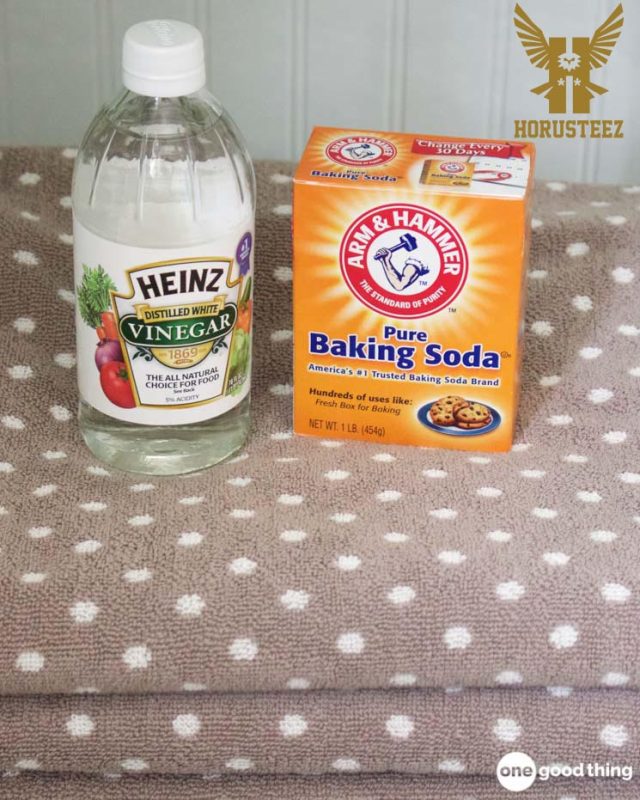News
Benefits of Cleaning Carpet with Vinegar and Baking Soda: A Comprehensive Guide

Cleaning carpets can be a challenging task, especially when faced with stubborn stains and odors. Luckily, natural and cost-effective solutions such as vinegar and baking soda can help you achieve a clean and fresh-smelling carpet. In this comprehensive guide, we’ll explore how to Cleaning Carpet with Vinegar and Baking Soda, highlighting the benefits and potential drawbacks of this eco-friendly approach.
Benefits of Cleaning Carpet with Vinegar and Baking Soda:
- Cost-Effective: Both vinegar and baking soda are affordable and widely available, providing a budget-friendly solution for carpet cleaning.
- Non-Toxic: Being natural solutions, vinegar and baking soda are free from harsh chemicals and toxins, making them safe for households with children, pets, and environmentally conscious individuals.
- Effective Stain Removers: Vinegar and baking soda excel at removing stubborn stains, whether from coffee, wine, or pet accidents, restoring the carpet’s appearance effectively.
- Deodorizing Properties: With natural deodorizing abilities, vinegar and baking soda neutralize unpleasant odors, leaving your carpets smelling fresh.
- Versatility: Beyond carpet cleaning, vinegar and baking soda prove to be versatile solutions for various household cleaning tasks, including floors, countertops, and laundry.
How to Cleaning Carpet with Vinegar and Baking Soda: Step-by-Step Guide
Materials Needed:
- White vinegar
- Baking soda
- Hot water
- Spray bottle
- Scrub brush
- Vacuum cleaner
Step 1: Vacuum Your Carpet: Thoroughly remove loose dirt and debris from your carpet using a vacuum cleaner with strong suction power.
Step 2: Prepare the Vinegar Solution: Mix equal parts white vinegar and hot water in a spray bottle. Apply the solution to the stained area, allowing it to sit for 5-10 minutes.
Step 3: Apply Baking Soda: Sprinkle baking soda over the affected area. The reaction with the vinegar solution creates a fizzing effect that helps lift the stain.
Step 4: Scrub the Area with Caution: Employ a gentle touch while using a scrub brush to work the baking soda into the carpet fibers. Avoid applying excessive pressure to prevent any potential damage to the carpet.
Step 5: Allow the Solution to Settle: Allow the solution to sit undisturbed for an additional 5-10 minutes, enabling the baking soda to absorb the stain effectively and neutralize lingering odors.
Step 6: Repeat Vacuuming Process: Utilize your vacuum cleaner to meticulously extract the baking soda and any remaining dirt from the carpet. If the stain persists, consider repeating the entire process until the desired results are achieved.
Step 7: Rinse and Blot Rinse the area with water to remove any residue, then blot with a clean towel to absorb excess water.
Step 8: Allow Drying Let the area dry completely before walking on it.
Drawbacks of Clean with Vinegar and Baking Soda:
- Strong Odor: The strong odors of vinegar and baking soda may linger in your home for several hours after cleaning.
- Not Effective on All Stains: These solutions may not be effective on all stain types, such as oil-based stains or specific dyes.
- Potential Carpet Damage: The abrasive nature of vinegar and baking soda may damage certain carpet types. Always test in a small area first.
- Requires More Effort: Compared to commercial cleaners, this method may demand more time and effort, which may not suit everyone.
Conclusion: Cleaning carpets with vinegar and baking soda offers a natural and cost-effective alternative. While these solutions prove effective for various stains, it’s essential to consider potential drawbacks and limitations. Always conduct a small-scale test and, if needed, seek professional cleaning services for optimal results. Achieve a fresh and clean carpet without resorting to harsh chemicals or expensive services with the right approach.
